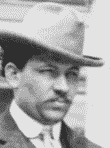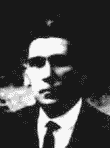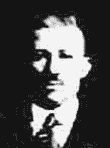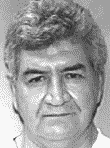

This Mafia family - an offshoot of the underworld society from the inland community of Montedoro in Sicily's south-central province of Caltanissetta - took root in the northeast Pennsylvania coal mining communities around Pittston, Scranton and Wilkes-Barre. The organization was sometimes referred to as "The Men of Montedoro." The group's home territory overlapped the New York border and blurred into the southern extent of the Buffalo-based Magaddino Crime Family in the Endicott, New York, area. The Scranton-Pittston Family also had members in western New York, New York City and the Philadelphia area. The organization has been closely linked since the Prohibition Era to what is now known as the Genovese Crime Family of New York City.

1903 - Tomasso Petto (Born c.1879. Killed Browntown, PA, Oct. 21, 1905.) Petto (known as "il Bove") was a member of the Morello Mafia in New York City. He was the prime suspect in the 1903 "barrel murder" but was released for lack of evidence. Fleeing further prosecution and possible retribution by the family of the barrel murder victim, Tomasso Petto relocated to the Pittston suburb of Browntown. While there he engaged in black hand extortion against the more affluent Italian residents. Locally, he was known by the aliases of Luciano Perrino and Thomas Carillo. Petto was murdered at his isolated home on Browntown's Lincoln Street in October 1905. Journalists characterized the killing as revenge for the barrel murder. The killers were never identified. Petto was buried in St. John the Evangelist Cemetery on Market Street in Pittston.
1904 - Santo Carisaro (Born c.1886.) Santo Carisaro (surname was also spelled Creso, Caressi and Corressi) was the teenage leader of a band of robbers and extortionists in Carbondale, Pennsylvania, northeast of Scranton. Area residents believed the gang was affiliated with the Mafia secret society in New York and sent a portion of its extortion income to Mafia leaders there. Carisaro was captured by a constable working with an anti-Mafia citizens' group on Nov. 28, 1904. As he was taken into custody on Dundaff Street, the law enforcement group was attacked by gangsters emerging from a local saloon. Two members of the citizens' group were shot and killed. Carisaro was successfully delivered to the county jail. He was convicted of robbery and carrying concealed weapons and sentenced on Feb. 1, 1905, to serve five years and nine months in Eastern State Penitentiary.
1904 - John Costa. As authorities in Carbondale, Pennsylvania, cracked down on the local branch of the Mafia society, informants told of arrangements between Carbondale and Mafia leaders in New York City. The informants pointed to John Costa as the intermediary between the two organizations, stating that Costa collected tribute payments from the Carbondale gang and brought them to New York Mafia bosses. Costa, described as a wealthy merchant, had a shop in Carbondale and visited frequently. During a December 1904 visit, he was arrested in connection with a Mafia-related killing, but he won release in bail. Costa's local lieutenant, Frank Mazzacula, was also arrested. When Mafiosi were brought to trial, Costa could not be found. There were rumors that he was in New York, recovering from a gunshot wound. He actually had returned to Italy. Italian authorities located and arrested him, and he was convicted as an accessory to murder. He was sentenced to thirty years in prison, said to be the equivalent of a life sentence for the aging Costa.

1903 - Stefano LaTorre (Born Montedoro Sicily, March 11, 1886. Died Pittston PA, July 5, 1984). LaTorre, who first entered the U.S. in May 1903 aboard the S.S. Sicilian Prince, looks to have been an early leader of a Mafia organization of immigrants from Montedoro, Sicily. LaTorre, the oldest of six children, joined his father Giuseppe, already settled in the Pittston area. The rest of his siblings soon joined him. LaTorre lived on Railroad Street and worked as a coal miner. He saved up to pay for the January 1906 transatlantic passage of his brother-in-law, Montedoro Mafia leader Santo Volpe, and members of Volpe's family. The LaTorres were related by marriage to Salvatore "Sam Lockin" Lucchino, a fellow Montedoro native, who later became a detective and a government informant. In 1907, extortion victim Charles Rizzo identified LaTorre as one of a gang of black handers (a gang called the "Committee of the Iron Hand Society" was said to be operating in the area) who terrorized him and his family. LaTorre and eleven others - including Lucchino and a Charles Bufalino - were convicted of extortion. Each defendant was sentenced to a year in county jail and a $25 fine. LaTorre was soon eclipsed by other Montedoro Mafiosi, and decades later he had a falling out with local Mafia leaders.

1908 - Santo A. Volpe (Born Montedoro, Sicily, Oct. 20, 1879. Died West Pittston, PA, Dec. 2, 1958.) In addition to his work as president of a coal company, Volpe led a criminal organization in northern Pennsylvania mining communities. Volpe was a brother-in-law of Stefano LaTorre and joined LaTorre in Pennsylvania in 1906. Volpe appears to have been a respected Mafiosi from his time in Montedoro. He became chief of the local Mafia in Pittston soon after his arrival. Volpe has been mistakenly linked with the James, Arthur and John Volpe killed in Pittsburgh in 1932. Those Volpe brothers were born in mainland Italy and were unrelated to Santo. Santo Volpe did have a hand in avenging their deaths, however, as he was among those called to judge and execute Pittsburgh boss John Bazzano for killing them. Santo Volpe was known by the nickname, King of the Night.
1933 - Giovanni Sciandra (Born Montedoro, Sicily, April 10, 1899. Died Sept. 11, 1949, Jenkins Township, PA.) Coal miner and mine operator Sciandra appears to have taken control of day-to-day operations in the Scranton crime family after about 1933. Some have incorrectly timed his rise with the death of Volpe, but it appears that Volpe went into retirement decades before his 1958 death. The Pittston family of the 1930s seems to have been operating under the auspices of New York's Luciano-Genovese family. During Sciandra's reign as boss, Stefano LaTorre was pushed out of the ownership of the Knox Coal Company and shelved as a member of the Pittston Crime Family.

Note: Giuseppe Barbara (Born Castellammare del Golfo Sicily, Aug. 9, 1905. Died Johnson City NY, June 17, 1959). Many historians believe that Barbara took over the Pittston-centered Mafia about 1940. His alleged assumption of power in northeast Pennsylvania coordinates with the belief that John Sciandra was murdered in 1940 on orders from Barbara. However, there is no evidence that Sciandra was murdered in 1940 or at any other time. He died of heart disease in 1949. It is more likely that Barbara served as Buffalo Crime Family capodecina over the distant Castellammarese Mafia outpost in Endicott, NY. Barbara is known to have cooperated closely with Pittston's Men of Montedoro, but there is insufficient evidence that he interrupted the Montedoro succession in Pittston. The fact that Barbara hosted national conventions of Mafiosi at his Apalachin country estate in 1956 and 1957 caused many of his time to believe he held a more significant spot in the Mafia hierarchy - some believed he was the supreme boss of the American Mafia. However, we now know that Barbara was ordered to host those conventions by Stefano Magaddino, boss of the Buffalo area.

1949 - Rosario Bufalino (Born Montedoro Sicily, Sept. 29, 1903. Died Kingston PA, Feb. 25, 1994.) "Russell" Bufalino, also known by friends as "McGee," likely became acting boss for the Pittston area after John Sciandra's death in 1949. Santo Volpe, the aging King of the Night, served in an advisory role. Some put the start of Bufalino's reign in 1959, due to a mistaken belief that Joseph Barbara, who died in 1959, was a Scranton-Pittston Mafia boss.
1957 - Russell Bufalino was boss of the northeast Pennsylvania Mafia at the time the American Mafia gathered for a convention at Joseph Barbara's Apalachin estate. Police crashed the party, took down names and license plate numbers and rounded up Mafiosi who attempted to flee the Barbara home. The police documentation established links between Mafia groups in different U.S. regions. A 1956 plane trip to Havana, Cuba, got Bufalino in trouble with immigration officials, as he improperly claimed U.S. citizenship upon his return. Bufalino's family began to emerge from under the Genovese family shadow in the 1960s. The Scranton organization began to engage in rackets in the Buffalo, NY, region and in Canada. Bufalino invested in a number of businesses in New York City and spent much of his time in the city.
1970s - U.S. efforts to deport Bufalino were derailed when the Italian government refused to accept him. Though he spent some of his later years in federal prison, Bufalino was one of the U.S. Mafia's most influential characters until his death in 1994. He was engaged in labor racketeering, loan-sharking and gambling. The FBI believed he had a hand in narcotics trafficking. He is widely believed to have had a part in arranging the disappearance and murder of former Teamster President Jimmy Hoffa.
1975 - Edward Sciandra (Born Montedoro Sicily, Nov. 13, 1912. Died Hallandale FL, July 13, 2003.) In the mid-1970s, Edward Sciandra of New York City, cousin to former boss Giovanni Sciandra, was believed to be calling the shots for the Scranton-Pittston family while Bufalino dealt with legal troubles.
1990 - In 1990, the Pennsylvania Crime Commission listed William D'Elia as a "significant member" of the Bufalino organization. D'Elia, former driver for Bufalino, stood in for Bufalino at crime family meetings. It appears that he was being groomed as the successor to Bufalino.

1994 - William D'Elia (Born June, 1946.) After Bufalino's death, D'Elia stepped up to the top spot in the crime family. In 2001, he was identified as the Scranton boss by Ralph Natale, the turncoat Philadelphia mob leader. Natale indicated that D'Elia had helped resolve disputes within the Philadelphia family.
2006 - D'Elia, 59, was indicted for money laundering in May. He was released only to be rearrested and charged with additional counts of money laundering as well as witness intimidation. He pleaded guilty in 2008 to money laundering and witness intimidation. He was given a relatively light sentence of seven years and three months in federal prison after assisting authorities in the prosecution of a casino owner charged with perjury. He was released in February 2013.